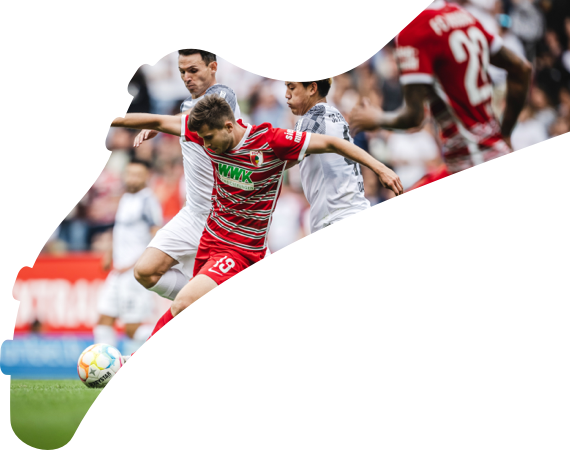
Borussia Dortmund: No place like home for Mats Hummels, Marco Reus and Co.
If you were surprised at news of Mats Hummels' impending return to Borussia Dortmund from Bayern Munich, don't be: BVB have a long history of bringing back beloved players to the club, from Marco Reus to Mario Götze, Nuri Sahin and Shinji Kagawa.
But when did it start and why does it keep happening? bundesliga.com investigates…
The when is the easy part. While numerous players have left on loan before returning to their parent clubs over the years, attacking midfielder Siegfried Held was the first to head back to Dortmund having departed on a permanent deal, returning in 1977 after leaving for Kickers Offenbach in 1971. World Cup winner Andreas Möller is another who couldn't resist the pull of the Black-and-Yellow shirts, returning to the Signal Iduna Park in 1994 following four years away.
Fast-forwarding to the modern era, Kevin Großkreutz – who was part of Germany's 2014 FIFA World Cup winning squad – will likely be a more familiar name to the millenials among us. The versatile midfielder was released by Dortmund as a teenager in 2002, at which point he joined local lower-division club Rot-Weiss Ahlen before eventually being welcomed back into the BVB fold in 2009.
Watch: Hummels' top 3 tackles!

Reus followed a similar path. Unthinkable as it may seem now given the Germany international's global reputation as a game-changer extraordinaire, the Dortmund No.11 was let go by the club in 2006 – likewise joining Rot-Weiss Ahlen – only to return six years later after breaking through at Borussia Mönchengladbach.
All of which brings us to the why. Players have returned to other clubs elsewhere, too. Claudio Pizarro is currently in his fourth spell at Werder Bremen, having also had two stints at Bayern Munich. Hummels himself graduated the Bayern youth academy before leaving and going back, while former Germany international Stefan Effenberg played for both Bayern and Gladbach in two separate periods.
But it has happened more at Dortmund in recent times than anywhere else. So is there something in the air at the Signal Iduna Park? Apparently so. "I've always felt at home here," said Reus when he agreed his transfer back to his hometown club in 2012. So much so that he used to visit his parents and friends in the city after playing for Gladbach.
Watch: Reus' skills and tricks

The 30-year-old underlined that sense of belonging when he signed a recent contract extension: "I grew up here, I was born here and I played here as a youngster. I just feel good here. Anyone who knows me knows that the most important thing for me is to have my family close by, to have my environment and my friends. Sometimes that's worth more than anything else."
It is a similar story with Sahin. The midfielder grew up in North Rhine-Westphalia and graduated from the Dortmund youth academy when he became the youngest ever player to feature in the Bundesliga in 2005 at the age of 16. After helping Jürgen Klopp's side to the Bundesliga title in 2011, he moved to Real Madrid and then Liverpool before returning to Dortmund two years later.
"I'm delighted to be back home - this is my city, my club," he said once the transfer was completed. "When I was at Real Madrid I realised that all I wanted was to be back at Dortmund."
Watch: True love, Dortmund style

And on it goes. Mario Götze, who went back in 2016 following three years at Bayern, wrote an open letter to fans on Facebook upon his return saying, "looking back with fresh eyes […] I wouldn't make the same decision [to leave] again."
Meanwhile, when Hummels went in the opposite direction in 2016, Dortmund CEO Hans-Joachim Watzke left him with the following parting gift: "I have a feeling we'll meet again and I can tell you one thing for certain: you're always more than welcome at Dortmund."
Perhaps it is inevitable. Großkreutz, Reus, Sahin, Götze and Hummels are all Dortmund local boys, having spent large chunks – if not all - of their youth in the region and at the club. In a sense they are returning to their roots.
The same cannot be said of Kagawa, however. The Japanese playmaker left Dortmund for Manchester United in 2012, only to be welcomed back with open arms two years later.
"I said when I left the club that my chapter at Borussia Dortmund wasn't finished," Kagawa said upon returning. "Now I'm just happy to be back in Dortmund with this great team, the incredible surroundings and unique fans. BVB is like a family. I'm proud that they didn't forget me and that I can be part of it again."
Perhaps that is the most revealing insight of all as to the spell the club casts on its players. Aside from feeling like home to many, Dortmund have a team capable of challenging for silverware in a city that lives and breathes for football while they play their matches at a packed-out 81,365-capacity Signal Iduna Park that houses the world's largest all-standing terrace, the Yellow Wall.
Such a combination of factors is not easily repeated anywhere else. Once you go Yellow-and-Black, it seems, you always go back.
Related news

Leverkusen are Bundesliga champions!
Bayer Leverkusen are celebrating their first-ever Bundesliga title after beating Werder Bremen on Sunday.

Matchday 29 highlights!
Leverkusen downed Bremen to take the title while Bayern beat Cologne, Dortmund won an exciting battle of the Borussias and Serhou Guirassy scored again for Stuttgart...

MD26 talking points
Die Werkself clinched the first Meisterschale in their history, while Stuttgart's centre-forward is leading their charge as they look to leapfrog Bayern, who are not yet ready to throw in the towel this term.


